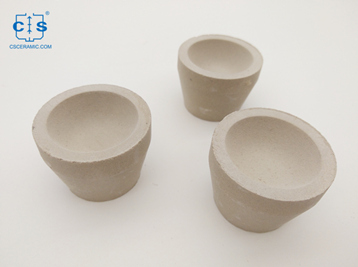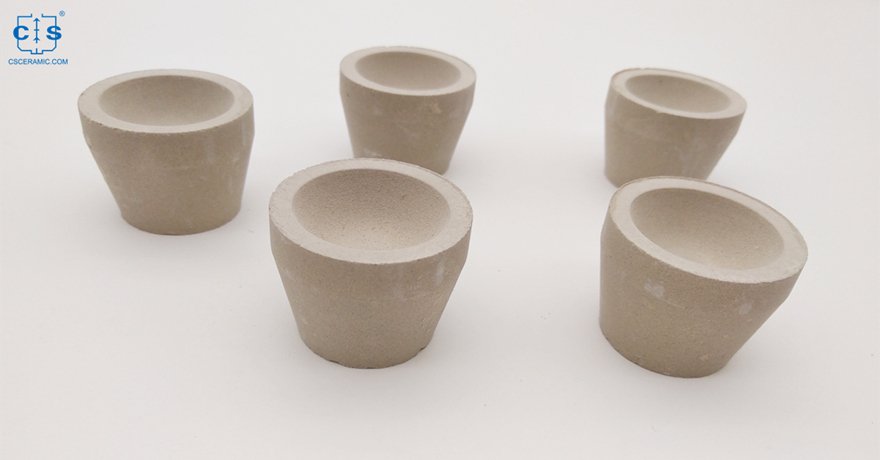Bone Ash Cupel
It is a type of cupel classic in mineralogical and analytical chemistry experiments. It is made of bone ash and is extremely heat resistant, making it the perfect material for laboratory tests involving high temperatures such as those required to determine the amount of non-combustible ash residue in a sample.This experiment involves heating a sample of ash to very high temperatures and measuring the amount of non-combustible ash residue that is produced.

This article unlocks how to conduct a experiment to determine the amount of non-combustible ash residue in a sample by using bone ash cupels.
Determination Preparation for Preparing Test Samples
The process of preparing screen samples for determining non-combustible ash residue in a sample begins with obtaining the sample. This can be done through and through varied methods, such as melting a sample of the material, or crushing and abrasion a try of the material. Depending on the type of sample, the sample should be placed in an appropriate container and heated until it is full melted. If the sample is a solid, it should be run aground down to a fine powder.

Once the sample is prepared, it should be cooled and the ash residue should be collected. This tin be done by using a undefined such as a sieve or a filter, to collect the ash residue from the sample. It is large to note that the ash residue should not be mixed with whatsoever other material, as this may affect the truth of the screen results.
Afterwards, the ash residue has been collected, it should be weighed and placed into a bone ash tree cupel. A bone ash tree cupel is a undefined vessel with a lid that is old to hold the ash tree residue while it is being heated. The debone ash tree cupel should be placed on a heat germ and heated until the ash residuum has been wholly combusted. During this process, the ash residuum will be rock-bottom to a fine powder.
Finally, the ash residue has been completely combusted, the bone ash cupel should be distant from the fire u source and the ash residue should be weighed. The difference between the weight of the ash residue before and after combustion will be the amount of non-combustible ash remainder in the sample.
A Test Plan for Determining Non-Combustible Ash Residue in a Sample Using Ash Bone Cupels
Gerenally, the experiment began by weighing out a sample of ash and placing it in a bone ash cupel. The cupel was then placed in a furnace and heated to a temperature of 1100°C. The furnace was so allowed to cool down earlier the sample was removed from the cupel. The cupel was then weighed again to determine the amount of non-combustible ash residuum that had been produced. A specific procedures have been listed below.
1. Obtain the Sample:
a. Determine the type of sample to be tested.
b. Collect a representative sample of the material.
c. Prepare the sample for testing, as necessary (e.g. grinding or melting).

2. Collect Ash Residue:
a. Place the sample in the ash bone cupel.
b. Make sure the sample has been placed correctly in the ash bone cupel.
3. Heat Sample:
a. Place the ash bone cupel on a heat source.
b. Monitor the heat source and adjust as necessary to ensure appropriate temperatures for combustion.
c. Heat the sample for an appropriate amount of time until all of the ash residue is completely combusted.
4. Weigh Ash Residue:
a. Remove the ash bone cupel from the heat source.
b. Allow the ash bone cupel to cool to room temperature.
c. Weigh the ash residue remaining in the ash bone cupel.
5. Calculate Non-Combustible Ash Residue:
a. Subtract the weight of the ash residue before combustion from the weight of the ash residue after combustion.
b. The difference in weight will indicate the amount of non-combustible ash residue in the sample.

After imitating the experiment, the experimental result and its related analysis about the amount of non-combustible ash residue in a sample had been released.
Result
The beginning mass of the ash specimen was 0.842 g. Following the sample being placed in the furnace, the mass of the cupel was 0.726 g. This implies that 0.116 g of non-burnable ash residue was created in the course of the experiment.
Analysis
This experiment yielded 0.116 g of non-combustible ash residuum. This implies that the ash sample contained a significant degree of non-combustible elements that were not entirely exhausted during the experiment. This could be because the ash sample contained minerals or other impurities that could not be totally eliminated during the experiment.
Conclusion
The experiment showed that a bone ash cupel can be used to identify the amount of non-combustible residue in a sample. The results suggest that the sample held a notable portion of material that failed to burn off during the experiment. Further trials may be needed to ascertain the precise composition of the non-combustible material in the sample.
Thank you for reading. We invite you to visit CSCERAMIC for more information if you would like to learn more about industrial ceramic material and the advanced range of ceramic products we offer.




 info@csceramic.com
info@csceramic.com







 +86 18273288522
+86 18273288522